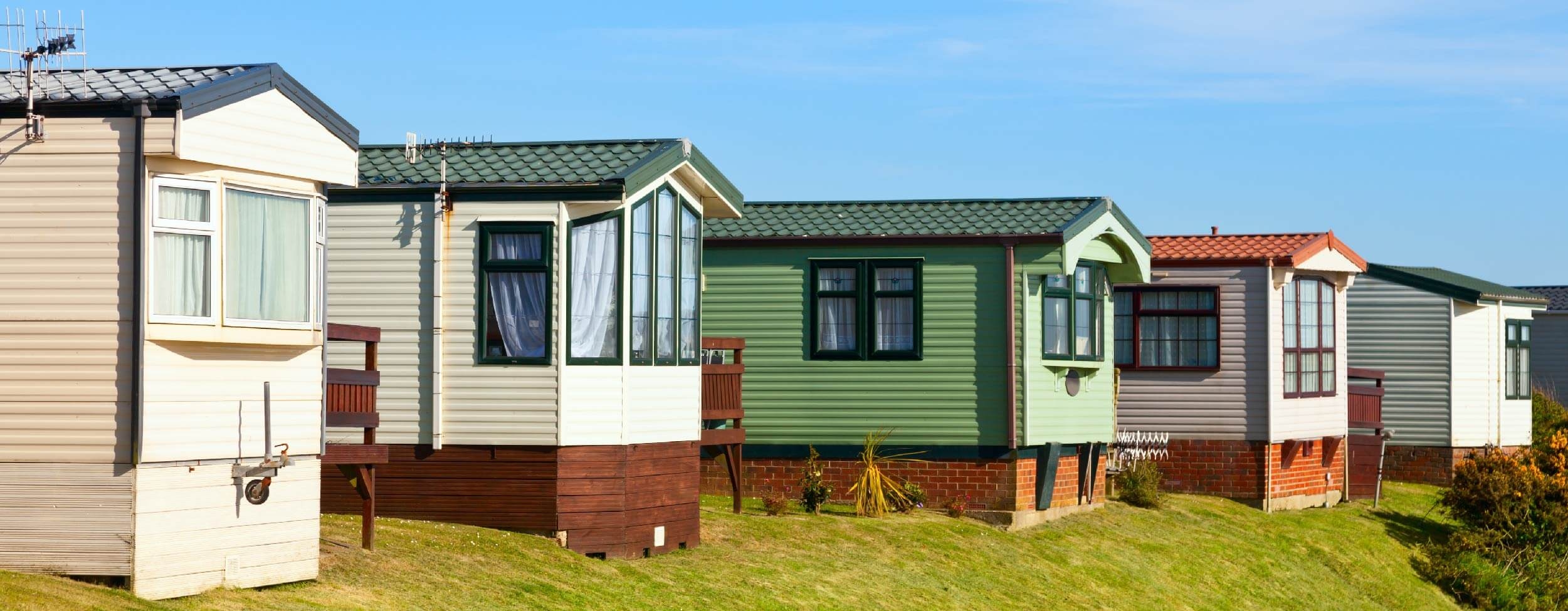Mobile Homes Can Be Less Vulnerable To Wind
Mobile homes are typically hard hit by hurricanes or even moderately strong winds. Much of the damage can be avoided, says Elliot Schrank, extension associate in the Department of Design and Environmental Analysis.
Schrank, a licensed architect, says that poor design and manufacturing practices are largely responsible for mobile homes' vulnerability to wind.
During high winds, windows in both manufactured (mobile) and stick-built homes can break, either directly from the winds or from flying branches and other objects. The rash of winds inside a home puts tremendous upward pressure on roofs, amplified by the fast flow of debris. A roof that isn't well anchored can be violently tom off, which in turn often causes the home to collapse. That was the pattern during Hurricane Andrew last summer, which felled entire tracts of homes on inland areas of Florida.
Roofs of stick-built homes that had been attached to the frame with nails rather than staples Pared the best during the hurricane. The same principle applies to manufactured homes, Schrank says.

"Stronger materials should be used in attaching roofs to the main bodies of manufactured homes," he notes.
Beyond that, a simple and inexpensive addition would significantly reduce wind damage: shutters. Once commonplace, shutters are now a design relic. But they're no relic functionally.
"Shutters will keep out much of the wind velocity and all of the rushing debris," Schrank says. "Windows might still get cracked from the sheer force of winds and flying objects, but the wind won't enter the house and the roof will stay intact."
Another danger spot for manufactured homes during high winds is the lack of anchoring to their concrete pads. Straps are supposed to be used to attach the homes to the pads, but owners often consider it a nuisance and incorrectly assume the weight of the home will be adequate to hold it in place.
"The potential danger of not strapping a home to its pad is so gnat that this should be mandatory rather than discretionary," Schrank says. "It should be part of municipal building codes and strictly enforced."
Much needed national reform won't occur until the Department of Housing and Urban Development (HUD) toughens its code for manufactured homes, Schrank observes. The portion of the code dealing with roofs is particularly weak. "The HUD code merely says that 'roof framing shall be securely fastened to wall framing to resist wind overturning and sliding as imposed by design loads.' The wording is so vague, manufacturers can basically do whatever they choose and still comply."
Studies should be done to determine the ideal designs for withstanding the 110 mph winds that HUD has identified as the criterion, Schrank observes.
The manufactured home industry will resist changes, he says, and its main argument will be that design improvements will make the homes less affordable. But, notes Schrank, "it's likely that only a modest increase would be necessary to improve safety substantially."
Schrank, a licensed architect, says that poor design and manufacturing practices are largely responsible for mobile homes' vulnerability to wind.
During high winds, windows in both manufactured (mobile) and stick-built homes can break, either directly from the winds or from flying branches and other objects. The rash of winds inside a home puts tremendous upward pressure on roofs, amplified by the fast flow of debris. A roof that isn't well anchored can be violently tom off, which in turn often causes the home to collapse. That was the pattern during Hurricane Andrew last summer, which felled entire tracts of homes on inland areas of Florida.
Roofs of stick-built homes that had been attached to the frame with nails rather than staples Pared the best during the hurricane. The same principle applies to manufactured homes, Schrank says.

"Stronger materials should be used in attaching roofs to the main bodies of manufactured homes," he notes.
Beyond that, a simple and inexpensive addition would significantly reduce wind damage: shutters. Once commonplace, shutters are now a design relic. But they're no relic functionally.
"Shutters will keep out much of the wind velocity and all of the rushing debris," Schrank says. "Windows might still get cracked from the sheer force of winds and flying objects, but the wind won't enter the house and the roof will stay intact."
Another danger spot for manufactured homes during high winds is the lack of anchoring to their concrete pads. Straps are supposed to be used to attach the homes to the pads, but owners often consider it a nuisance and incorrectly assume the weight of the home will be adequate to hold it in place.
"The potential danger of not strapping a home to its pad is so gnat that this should be mandatory rather than discretionary," Schrank says. "It should be part of municipal building codes and strictly enforced."
Much needed national reform won't occur until the Department of Housing and Urban Development (HUD) toughens its code for manufactured homes, Schrank observes. The portion of the code dealing with roofs is particularly weak. "The HUD code merely says that 'roof framing shall be securely fastened to wall framing to resist wind overturning and sliding as imposed by design loads.' The wording is so vague, manufacturers can basically do whatever they choose and still comply."
Studies should be done to determine the ideal designs for withstanding the 110 mph winds that HUD has identified as the criterion, Schrank observes.
The manufactured home industry will resist changes, he says, and its main argument will be that design improvements will make the homes less affordable. But, notes Schrank, "it's likely that only a modest increase would be necessary to improve safety substantially."
Comments
Post a Comment